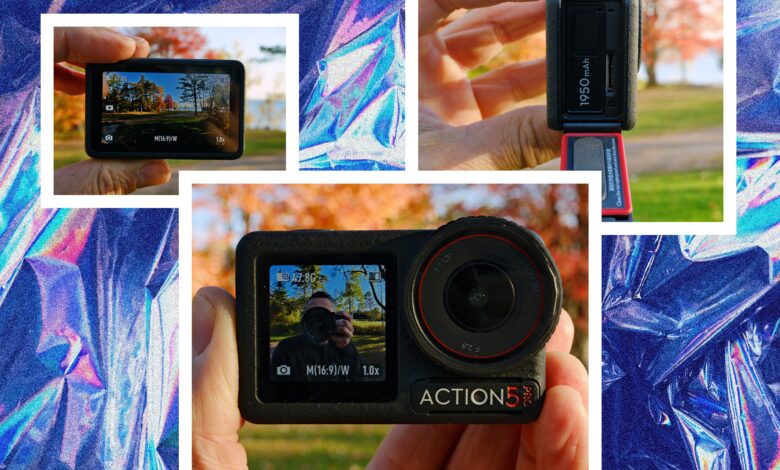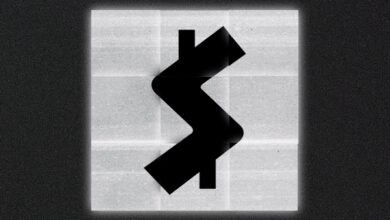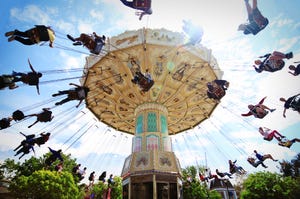DJI Osmo Action 5 Pro Review: Long Battery Life and Great 4K Footage

DJI’s new Osmo Action 5 Pro is here to compete with the new GoPro Hero 13 Black. The company’s latest action camera is smaller and lighter, has 47 GB of built-in storage, and has battery life that GoPro owners don’t even dare to dream about.
Throw in a new, higher-resolution image sensor, improved low-light capabilities, subject tracking, and out-of-the-box support for the DJI Mic 2 wireless microphone, and you have a camera that’s not only capable of getting that shot but has the battery life to keep getting the shot long after the competition has shut down.
Go Longer
The Osmo Action 5 Pro stands out from the rest of the action camera market for its battery life. It can shoot well over two hours at 4K resolution and 60 frames per second, which is far and away the longest run time of any action camera I’ve ever tested (and I’ve tested a lot). I mention this first because something that often gets lost in reviews and spec comparisons is the simple fact that any footage is better than no footage.
Photograph: Scott Gilbertson
To provide a concrete example, I don’t love the color rendering of the Osmo Action 5 Pro in 10-bit Normal color mode, but I’ll take it over no footage at all, which is what the GoPro Hero 13 would offer me after the 1-hour-and-45-minute recording mark when its battery would die and the camera would shut off. Battery life matters, and in the case of action cameras, given that all else—sensors, stabilization, ergonomics—can be so similar, it might be the most important factor in getting the shots you want.
The Osmo’s camera design hasn’t changed—the body is lightly textured, making it easy to hold, and it remains the same size, retaining the magnetic mounting system. (I’ve always liked that the cage for the Action series allows both vertical and horizontal mounting.) While I don’t have any accessories other than some neutral-density (ND) filters, everything that fits your Action 4 should continue to work with the Action 5. And the more capable battery? It’s backward compatible with the Action 4.
Photograph: Scott Gilbertson
While the design is mostly unchanged, the front and back screens are new. Both are larger and now have OLED panels. Whether it’s the OLED or the fact that they’re brighter I’m not sure, but they’re fantastic even in sunny conditions.
The Action 5 Pro uses a roughly 40-megapixel 1/1.3 sensor, which is the same size as the previous model, but with nearly four times the pixel density, making it notably sharper. It’s also larger than the 1/1.9 sensor you get in the GoPro. I know those numbers seem abstract, so consider what our metric friends know: the DJI sensor is 10 x 7.5 mm while the GoPro sensor is only 6.3 x 5.5 mm. A larger sensor usually means brighter and more detailed shots.
DJI is claiming that this sensor can capture up to 13.5 stops of dynamic range, and indeed it is here that I part ways with the Osmo Action 5 Pro. I completely believe DJI’s claim, but I don’t like the results. Out of the box, the Action 5 Pro in normal color mode looks like it’s shooting in HDR, and I don’t mean that in a good way. Shadows are unnaturally light, colors are oversaturated, and the results look fake to me in the way that overdone HDR photos look fake.
The good news is that this is not the only way to shoot. The Osmo Action 5 Pro supports a wide range of preset color profiles as well as D-Log video, so after playing around with other modes to see what they were like, I shot everything in Log and did my coloring using desktop software. I also found shooting in D-Log superior in low-light situations; it was even better than DJI’s new Super Night Mode. I mention this not so much to ding DJI for its color rendering, which I consider primarily a matter of taste, but to point out that default settings aren’t always the right choice.
Sharp and Stable
Photograph: Scott Gilbertson
Speaking of low light, I happened to be testing the Action 5 Pro alongside the GoPro Hero 13, and in low light—by which I mean everything from twilight to just indoors during the daytime—the Action 5 Pro consistently had better-looking footage. Significantly better. In some situations, the GoPro footage became so pixelated and mushy that it was useless, but the Action 5 Pro had no issues. You can argue, as GoPro likes to, that low light is not the place for an action camera, but if you’re shooting your kid’s sports practice, for example, which is often late in the evening, then low light matters and the Action 5 Pro is the superior camera in that regard.
The Action 5 Pro lens has a fixed aperture of f/2.8 with a 155-degree field of view and a close focus distance of 14 inches. The latter is a slight improvement over the Action 4 and should make it a little better for vlog-style shots. The one disadvantage of the larger sensor is that the close focus distance isn’t quite as close as it is with a GoPro. This means sometimes you end up with out-of-focus footage (I never had this issue with the Action 4, though I did run into it with Insta360’s Ace Pro and I have seen users complaining about it in the Action 4).
Other small but welcome additions include a pressure sensor that tells you how deep you’re diving or how high you are when skydiving or just hiking in the mountains, the built-in 47 GB of storage (which works out to about an hour of 4K footage), and the ability to shoot 4K at 120 fps in 4:3 aspect ratio.
Photograph: Scott Gilbertson
One of my favorite things about the action camera market right now is that there is no bad stabilization anymore. GoPro, DJI, and Insta360 all use slightly different stabilization software, but overall they’re all excellent, and the Action 5 Pro is no exception. I had no issues with stabilization testing it while hiking, biking, sailing, paddleboarding, and free diving. It just works.
The Action 5 Pro is one of the best action cameras I’ve ever used. It has the battery life others only dream of, shoots very sharp, detailed video, and seamlessly pairs with the DJI Mic 2 for great wireless audio. Compared to the GoPro Hero 13, it’s a tough call. Both are very capable, and the new interchangeable lenses for the GoPro are compelling, but if you need the low-light performance and want the larger sensor, the Action 5 Pro is the camera to get.


